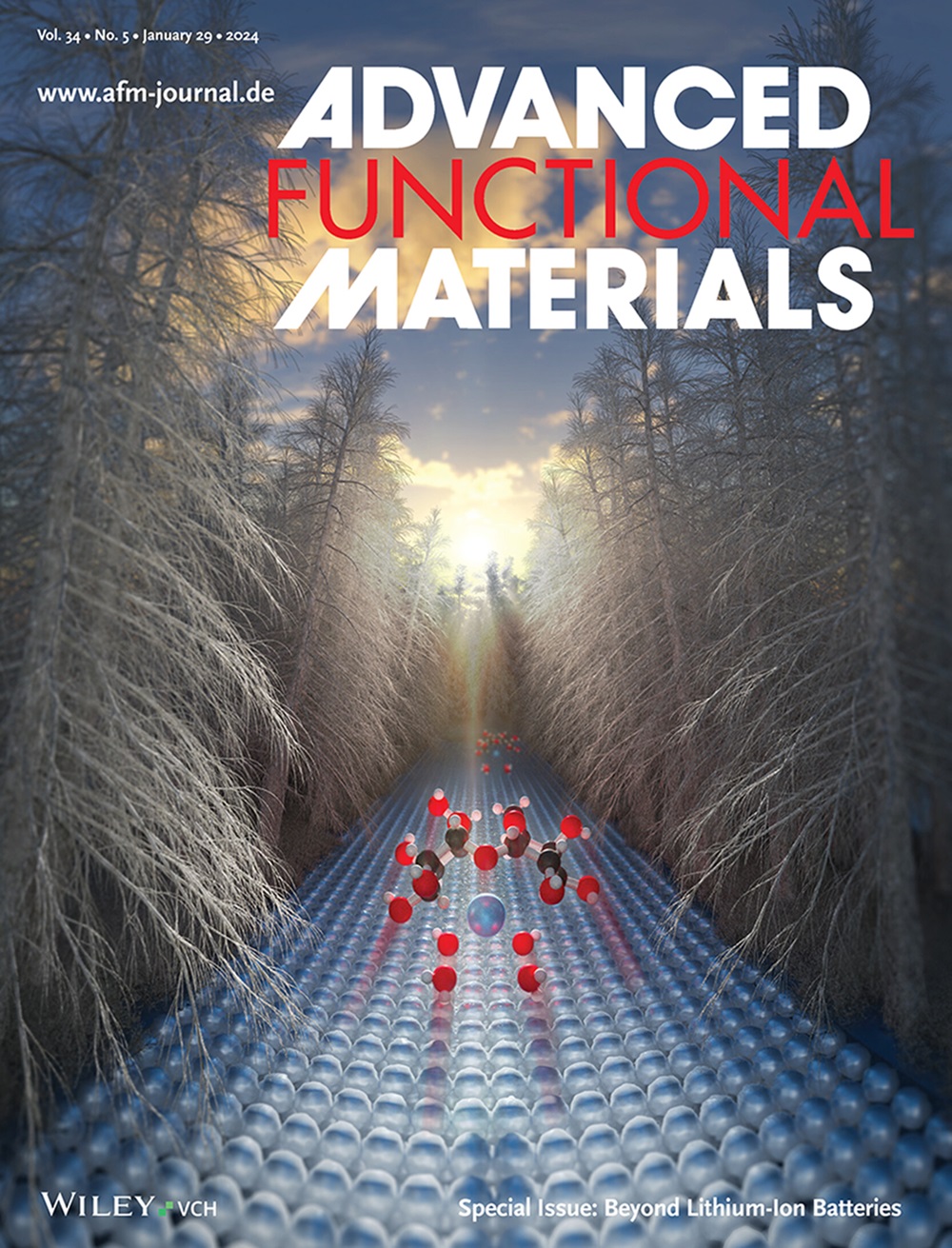Red Phosphorus@SnSe0.5S0.5 Core-Shell Heterostructure Enables Superior Sodium Storage via Synergistic Ion Diffusion and Polyphosphides Trapping
IF 19
1区 材料科学
Q1 CHEMISTRY, MULTIDISCIPLINARY
引用次数: 0
Abstract
Red phosphorus (RP) has emerged as a highly promising anode material for sodium-ion batteries (SIBs), mainly due to its affordability, remarkable theoretical specific capacity (≈2600 mAh g⁻¹), and relatively low sodiation voltage (≈0.4 V versus Na/Na⁺). However, the widespread application of RP is severely limited by several inherent drawbacks, including its poor electronic conductivity, dissolution of polyphosphides during cycling, and substantial volumetric expansion that occurs upon sodiation. To address these challenges, a novel core-shell heterostructure of RP@SnSe0.5S0.5 is developed and anchored onto 3D N-doped graphene (3DNG) layer using a simple solvothermal synthesis method. Both experimental results and first-principles calculations demonstrate that the improved electrochemical performance can be primarily attributed to the increased ion diffusion facilitated by the heterostructure interface and the strong chemical interaction with polyphosphides, which stabilize the RP during cycling. The RP@SnSe0.5S0.5/3DNG exhibits a high-rate capacity of 492.7 mAh g⁻¹ at 10 A g⁻¹, and it maintains a remarkable 96.9% of its initial capacity after 1500 cycles, showcasing its unprecedented cycling stability. This study highlights the potential of tailoring advanced heterostructures and support matrices for designing high-performance P-based anode materials in SIBs applications.红色Phosphorus@SnSe0.5S0.5核壳异质结构通过协同离子扩散和聚磷酸盐捕获实现优越的钠储存
红磷(RP)已经成为一种非常有前途的钠离子电池(sib)阳极材料,主要是因为它的价格低廉,显著的理论比容量(≈2600 mAh g⁻¹),以及相对较低的钠化电压(相对于Na/Na⁺≈0.4 V)。然而,RP的广泛应用受到几个固有缺陷的严重限制,包括其电子导电性差,循环过程中多磷酸盐的溶解,以及在碱化时发生的大量体积膨胀。为了解决这些问题,研究人员开发了一种新型的核壳异质结构RP@SnSe0.5S0.5,并使用简单的溶剂热合成方法将其固定在3D n掺杂石墨烯(3DNG)层上。实验结果和第一性原理计算都表明,电化学性能的提高主要是由于异质结构界面促进了离子的扩散,以及与聚磷酸盐的强化学相互作用,从而在循环过程中稳定了RP。RP@SnSe0.5S0.5/3DNG在10 a g⁻¹下的高速率容量为492.7 mAh,在1500次循环后仍保持其初始容量的96.9%,显示出前所未有的循环稳定性。这项研究强调了定制先进异质结构和支撑矩阵在sib应用中设计高性能p基阳极材料的潜力。
本文章由计算机程序翻译,如有差异,请以英文原文为准。
求助全文
约1分钟内获得全文
求助全文
来源期刊

Advanced Functional Materials
工程技术-材料科学:综合
CiteScore
29.50
自引率
4.20%
发文量
2086
审稿时长
2.1 months
期刊介绍:
Firmly established as a top-tier materials science journal, Advanced Functional Materials reports breakthrough research in all aspects of materials science, including nanotechnology, chemistry, physics, and biology every week.
Advanced Functional Materials is known for its rapid and fair peer review, quality content, and high impact, making it the first choice of the international materials science community.
 求助内容:
求助内容: 应助结果提醒方式:
应助结果提醒方式:


